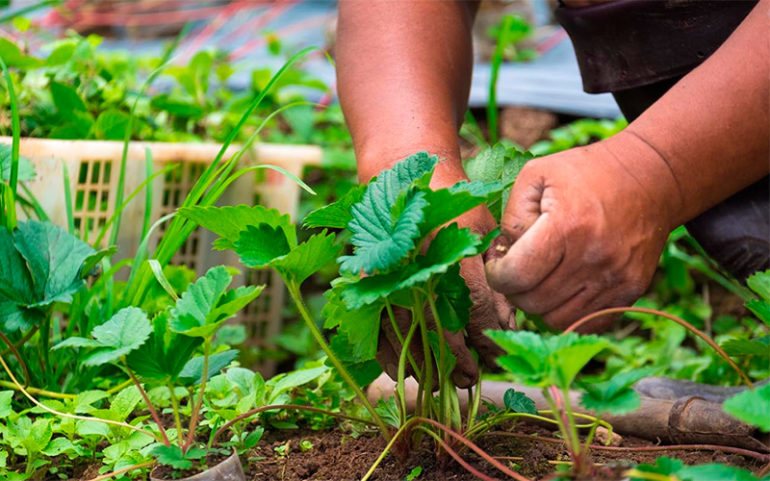Strawberries are an amazing refreshing taste and mass of vitamins. Therefore, everyone who grows it in their beds is interested in the fact that next year the crop of this wonderful berry is at least no worse than the year of the current one, and even better - surpassed it.
Contents
- When is strawberry leaves cut after harvesting?
- Do I need to cut strawberries after harvesting?
- Strawberry processing after harvesting: loosening and mulching
- Strawberry processing after harvesting: hilling
- Strawberry processing after harvesting: weeding
- Feeding strawberries after harvesting and trimming
- Video: Autumn strawberry fertilizer
- Watering strawberries after harvesting
- Strawberry processing after harvesting from diseases and pests
- Care for repair strawberries after harvesting
- Video: What to do with strawberries after fruiting?
But how to achieve a high harvest of strawberries and garden strawberries? With the help of our care tips!
When is strawberry leaves cut after harvesting?
- This is the first event from the set of actions that must be done after the crop is harvested. The bush needs to be updated before the new season, and this applies to both strawberries and strawberries of garden. After all, when the plant finishes bear fruit, the “spent” leaves begin to die.
- As a result, it occurs their lesions of diseases are actively developing infections, and this creates favorable soil for the propagation of all kinds of pests. As a result, if you do not remove such affected leaves, the bush by the next year is suitable for weakened or completely sick.
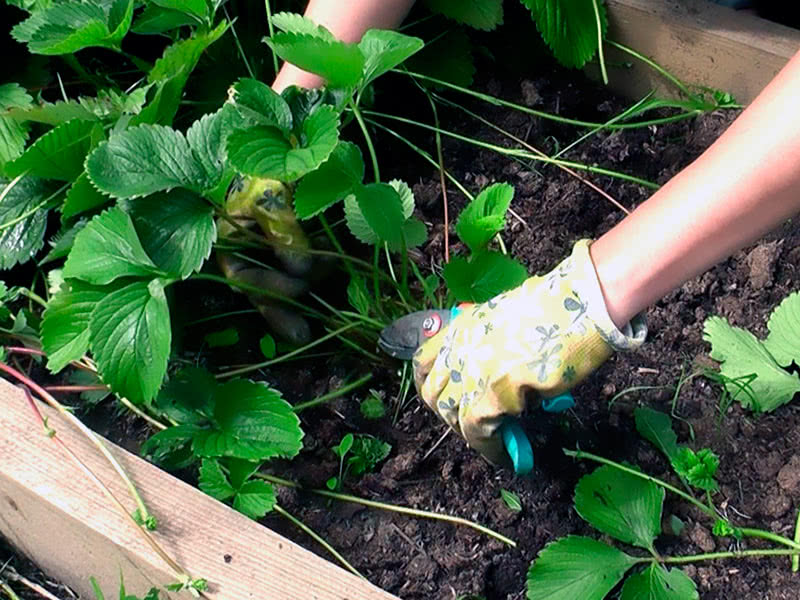
- Some remove the plants of the plant almost completely, others - those leaves that are already noticeably damaged and completely lie on the ground. In the first case, together with sick leaves, they remove and young, fresh. But strawberries continue to grow and thus instead of directing strength to the formation of the future crop, the bush consumes them to resume young foliage.
- Regarding how exactly the pruning is, the opinions of gardeners also diverge. In one case, it is cut off using a secateur so as not to harm the plant, which is possible if you break the leaf. The second option is on the contrary, it is precisely to break off the old leaves, while gently holding the bush in the area of \u200b\u200bthe outlet. Such a breakdown is quite easy, since the sheet simply breaks away by itself, like its stipling.
- With this approach, cut petioles do not remain to be removed, which are subject to infections during drying, and in dry form they create a favorable environment so that the pests of berries gather there. And, by the way, at the same time it would be nice to remove unnecessary strawberries after harvesting.
Do I need to cut strawberries after harvesting?
- We’ll make a reservation right away - we will talk about the antennae that grow in the form air shoots. In the process of their growth, they feed on the juices of the bush and continue to do this even after rooting.
- There are varieties that give about 30 antennae for one season, moreover, with several young sockets, which weakens the bush. Having taken away the forces from him, such antennae can lead to a decrease in the crop of the next season - the forces go to the growth of young sockets, and not to the development of flower buds. This weakens the plant, and can even turn out to freeze, since the bush could not prepare for the cold.
In order not to turn a plot with strawberries into continuous greens and save the forces and the required amount of nutrients necessary for the formation of future kidneys, and strawberries are cut off after harvesting. The sockets are excellent natural planting material, and for better propagation, it will be correct to use those that are closest to the parent bush - they are the most powerful and thick.
- In addition, it is better to take sockets from young bushes that grow only the first year. More old bushes can give infected offspring, so the antennae is best removed. It is easiest to do this by a secateur.
Strawberry processing after harvesting: loosening and mulching
- By putting order on the beds with strawberries after harvesting, it is very important like the soil between the rows. Loves strawberries soil with high breathability, and this is especially true precisely during the period after the maturation and collection of berries. Indeed, by this time both fresh young leaves and new roots grow. Such a growing lasts until the beginning of autumn, and until that time it will be correct periodically loosen the soil of aisles.
- The average frequency in dry weather is once every two weeks, in addition, watering or the rain that moisturizes the soil also leads to the need to carry out loosening, the depth of which is up to 10 cm.
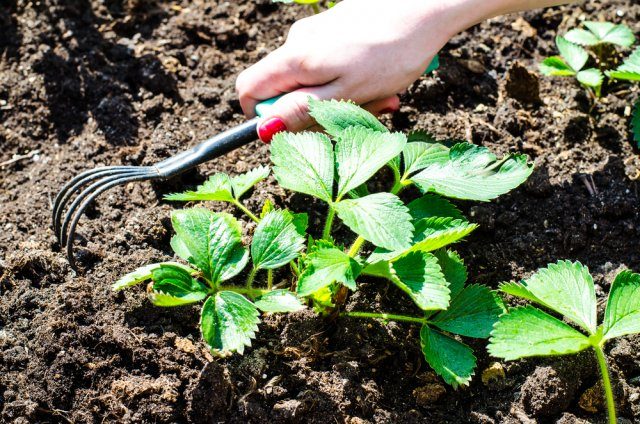
- If loosening for some reason is difficult for you, you can use the way mulching the beds with strawberries. So the soil needs watering less and is more loose. Another plus is less weeds and relatively clean berries that practically do not come into contact with the soil.
- The role of mulch in the garden can act straw, which is most often used for this purpose, you can also lay needles, sawdust, pine bark or meadow. Of non -natural materials, they also use film or agrofibre.
Strawberry processing after harvesting: hilling
- During the way you carry out loosening, it can be supplemented with such an operation as hill strawberries after harvesting. The fact is that the stems of strawberries and strawberries of Sadovaya do not grow up, appearing from the side kidney, giving more and more horns. The bush becomes magnificent, giving more flowers and therefore the harvest. The most intensive development occurs precisely after fruiting is completed.
- Since these new horns are located higher than the initial level at which the plant was planted, a system of additional roots is formed below. In order to protect them from bulging from the ground, preserve the nutrients that they give, and prevent them from freezing in the cold season, after you remove the old leaves, you need to fill up the earth to the bush. The best composition for strawberries will be humus.
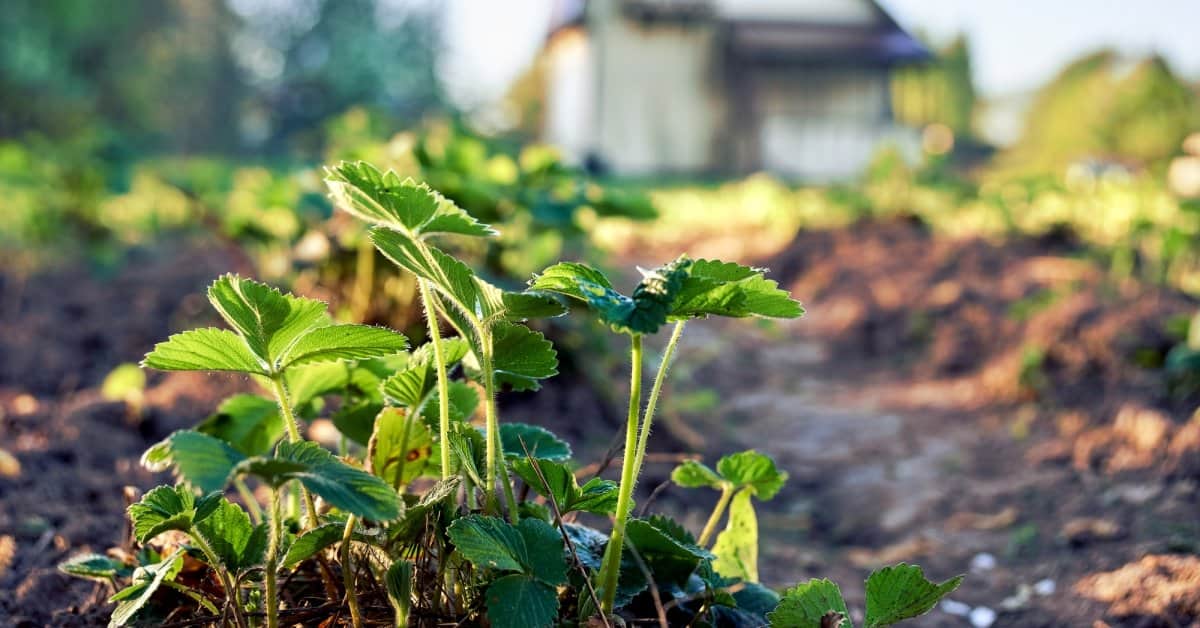
Strawberry processing after harvesting: weeding
- During the loosening and hilling of the soil in which your bushes grow, carry out simultaneous weeding of strawberries after harvesting from weeds that have managed to appear after you have harvested.
- Moreover, removing them from the aisles, pour the materials that you use for mulching into the passages between the bushes - So you will carry out this necessary operation and prevent a repeated abundant growth of weeds.
- It will be necessary to weed again In the autumn period, but then you no longer have to make so much effort, because weed grass will be much smaller, since you will already remove the bulk of it immediately after collecting strawberries.
Feeding strawberries after harvesting and trimming
- This operation is very important in the processing process of strawberries after harvesting. After all, the bush continues to actively develop. He produces new leaves and roots, peduncles, sockets, antennae, horns are formed, which will take care of the crop of next year. Naturally, new shoots need high -quality and good nutrition. It is for this that strawberries and strawberries of Sadovaya are carried out.
- First of all, to build up a new sheet apparatus, you need nitrogen. A large amount of it is contained in such natural fertilizers as chicken droppings.
- If we talk about mineral fertilizers, then you can use urea. It is very important not to exceed the required dose - it should be approximately twice as much as the manufacturer recommends for the main fertilizer. Too many nitrogen will lead to a low laying of flower buds, but there will be a lot of greens.
- And the second half of August must be used to make phosphorus-potassium fertilizerswho will contribute to the effective formation of kidneys and the best wintering of bushes. Do not postpone top dressing for a later date - so you provoke the development of the plant at a time when it should direct forces to prepare for the cold, and in the end it may poorly transfer them.
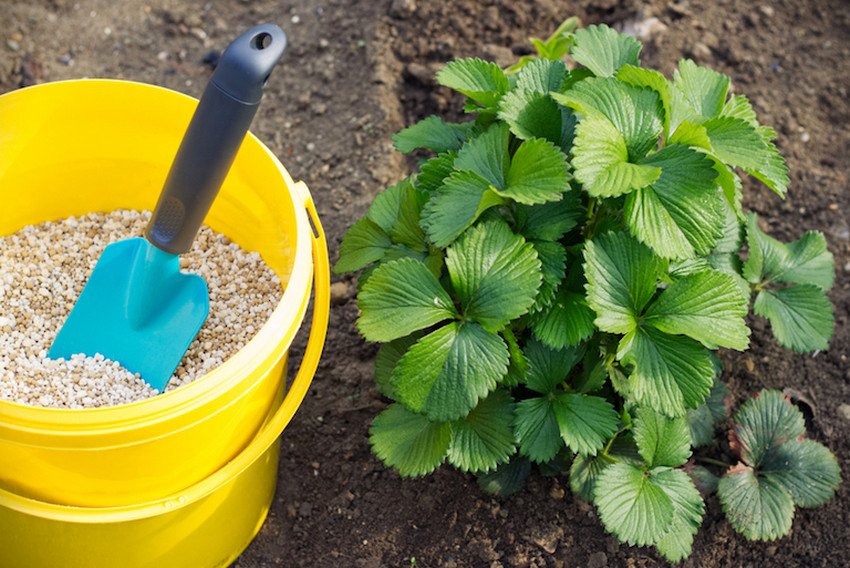
How to fertilize strawberries after harvesting?
- To fertilize healthy strawberries after harvesting, you can use mixtureconsisting of a glass of wood ash and nitrofoski (at the rate of 2 tbsp., Dissed down in 10 liters of water). Young plants will need a liter order, more adults-up to 1.5-2 liters per 1 square. m.
- Mid -July can be used to make chickendiluted in water in a ratio of 1:20. Watering the ground under the bush should be watered, while the solution of the solution on the leaves is undesirable. This must be done after rain or watering was carried out. Calculation of the required number: 10 liters of fertilizer for 8 bushes of an adult plant. Young plants of this amount are enough for 25 bushes.
- Experts also recommend the following composition: 60 g of superphosphate, 30 g of ammonium nitrate and 20 g of potassium chloride at 1 square. meter. Suitable for top dressing a weak solution of mullein In a ratio of 1:10 - this is enough for a dozen bushes.
- Well laid out on beds with strawberries mullein or horse manure in small pieces Immediately after you process the soil, removing weeds and loosening it. In case of subsequent moisture in the soil, these fertilizers, gradually dissolving, will give beneficial substances and trace elements to the soil, reaching the roots.
- Mineral fertilizers can simply be scattered along the beds, with the help of a trap, deepen from the soil, and then pour and mulch the soil. Subsequent loosening and irrigation can be carried out through the mulching layer.
Video: Autumn strawberry fertilizer
Watering strawberries after harvesting
- It is important to remember that watering strawberries after harvesting in the last month of summer is even more important than at the time when the berries are ripening. It complements the active nutrition of the bush and also contributes to the formation of the future crop. Do not delay watering longer than 2 weeks. To understand that the plant needs water, pay attention to the bushes. If they drooped, and the leaves dry out, it means it's time to take up the watering can.
- Watering can be done both by sprinkling and pouring water under the root. The sun's rays are no longer so burned by the leaves that they can get a burn. Watering should be plentiful, moisture should penetrate enough depth.
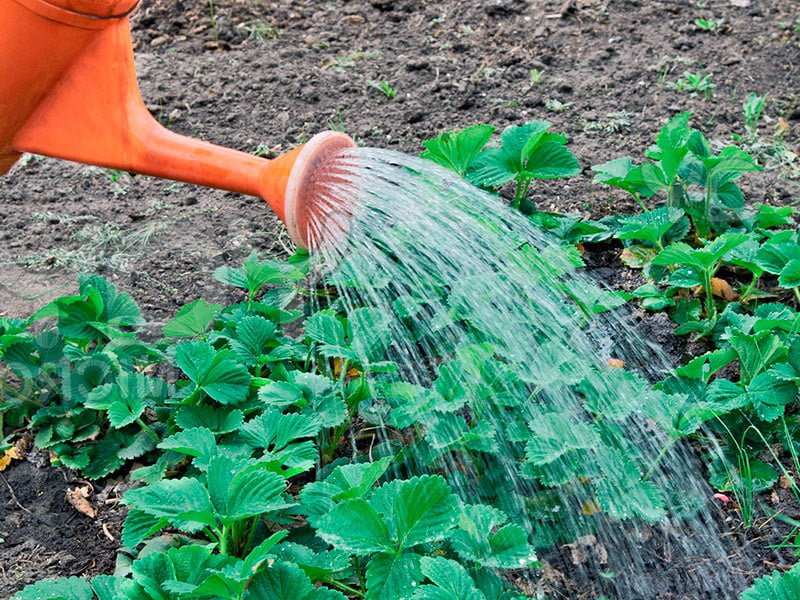
Strawberry processing after harvesting from diseases and pests
- One of the most often affecting strawberries of diseases - anthracnosis. It is from him, as well as from white spotting, that can protect the removal of inflorescences. Also remove the leaves on which strawberry tick. And if you see that the plant is practically infected as entirely, then simply cut it off by a secateur, leaving the stem at a level that is slightly higher than the growth point is located. Be sure to burn the remains so as not to infect other plants.
- In the fall, preventive processing is carried out, for which strawberries should be processed after harvesting nitrofen, not forgetting about the ground. This will help destroy a possible fungus and viruses. In the case of the first signs of such a disease as powdery mildew, treat the plants with topaz.
- As for the fight against pests of strawberries, then snails and slugs They gather in the main manual way, and the rest of the pests do not like Aktellik or Karbofos very much, so treating with these drugs it will be quite effective.
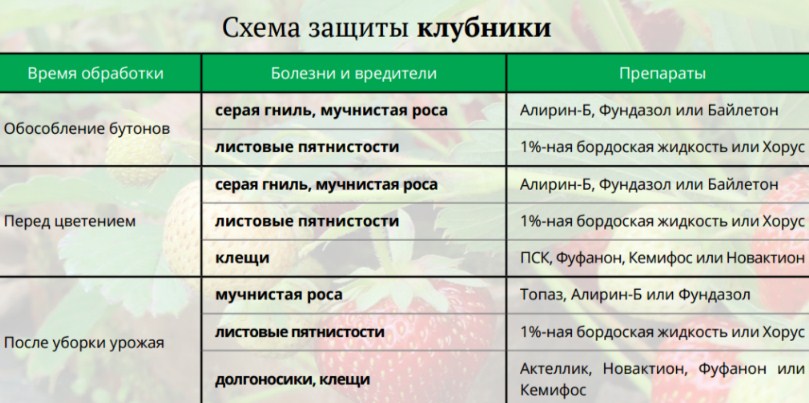
Care for repair strawberries after harvesting
- Start repairing strawberries after harvesting to cook for the next season somewhere in mid-September. You should take care of the root system and, in order to protect it from the upcoming frosts, you need to hide it, putting it with the soil.
- It is also necessary to cover the plants with cut siderates or mulch the soil, using straw, leaves, decorated weeds and other natural materials. Do not forget to remove the peduncles that still remain, otherwise they will weaken the plant. The leaves that are dry must be cut after the first frosts come.
- Bushes that fruit first time can not be cut at all, removing only those antennae or leaves that look sick or weak.
We also prepared interesting articles for gardeners and gardeners:
- In what month, in which forests are collected by different mushrooms
- How to protect cucumbers from aphids on cucumbers
- How to deal with the gray vertical rot in tomatoes
- How to get rid of horseradish in the garden
- What is the best way to feed strawberries in the spring for a good harvest?

